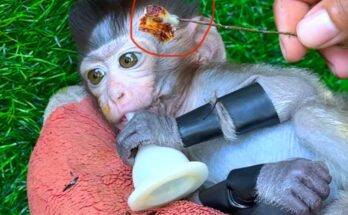Symptoms of Stress in Monkeys: Understanding Their Emotional Well-being
Monkeys, like humans, are highly social and intelligent creatures. Their complex emotional and social lives make them vulnerable to stress, especially when their environment or social structure changes. Understanding the symptoms of stress in monkeys is vital for researchers, zookeepers, and pet owners to ensure their physical and psychological health.
1. Behavioral Changes
One of the most noticeable signs of stress in monkeys is a change in behavior. Monkeys under stress may become unusually aggressive, submissive, or withdrawn. Aggression can manifest as biting, chasing, or vocalizing loudly toward other monkeys or humans. On the other hand, some monkeys may become passive, avoiding eye contact or social interaction altogether. A typically playful monkey that suddenly isolates itself may be experiencing emotional distress.
2. Repetitive or Stereotypic Movements
Stereotypic behaviors—repetitive, purposeless movements—are a major indicator of chronic stress. These may include pacing back and forth, rocking, spinning, or self-clasping. Such behaviors are commonly observed in captive monkeys living in restricted environments with limited stimulation. These actions often serve as coping mechanisms for anxiety and frustration, similar to how humans might fidget or pace when nervous.
3. Self-Harm and Over-Grooming
In more severe cases, stressed monkeys may engage in self-harming behaviors such as pulling out their own hair, scratching excessively, or even biting their limbs. Over-grooming can lead to bald patches or wounds. This behavior is often linked to boredom, isolation, or the absence of a supportive social group. Early intervention is crucial to prevent injury and address the underlying causes.
4. Changes in Appetite and Weight
Just as humans might eat more or less when stressed, monkeys also experience fluctuations in appetite. Some may lose interest in food, leading to rapid weight loss and malnutrition. Others may overeat as a form of comfort, especially if they have constant access to food in captivity. Caretakers should monitor eating habits closely, as changes can indicate not only stress but also potential health problems.
5. Altered Sleep Patterns
Stress can disrupt a monkey’s normal sleep-wake cycle. They might have difficulty settling down to sleep or may appear unusually lethargic during the day. In group settings, stressed individuals might avoid sleeping near others or choose isolated spots, showing signs of insecurity or fear.
6. Vocal and Facial Expressions
Monkeys use vocalizations and facial cues to communicate emotions. Increased screeching, whining, or alarm calls can indicate anxiety or agitation. Subtle facial expressions—like frequent lip-smacking, grimacing, or widened eyes—may also signal discomfort. Observing these cues helps caretakers identify emotional distress early.
Conclusion
Recognizing stress in monkeys is essential for their welfare. Environmental enrichment, social interaction, and consistent routines can significantly reduce anxiety and promote mental health. Whether in the wild, research settings, or captivity, monkeys thrive best when their emotional needs are met. By understanding the symptoms of stress, we can help ensure these intelligent animals live healthier, more balanced lives.


